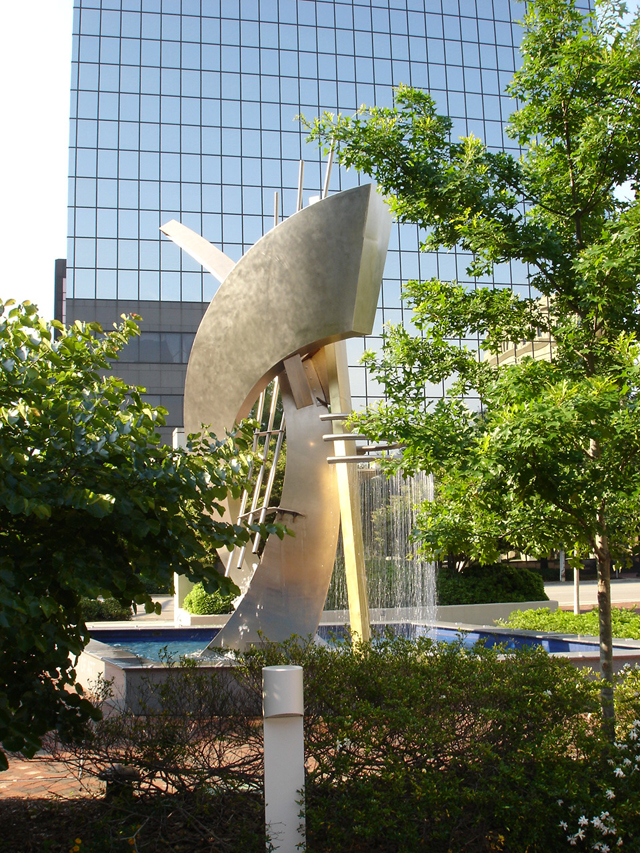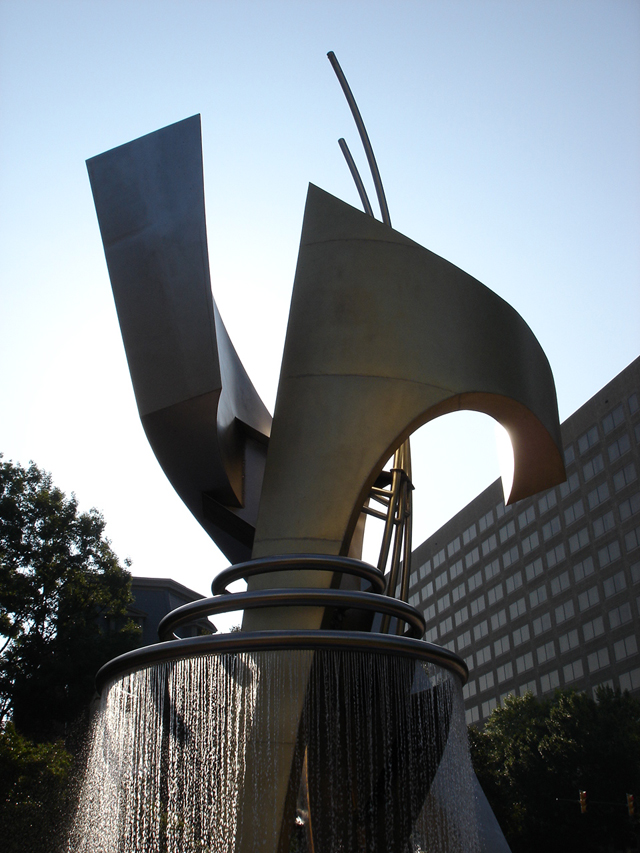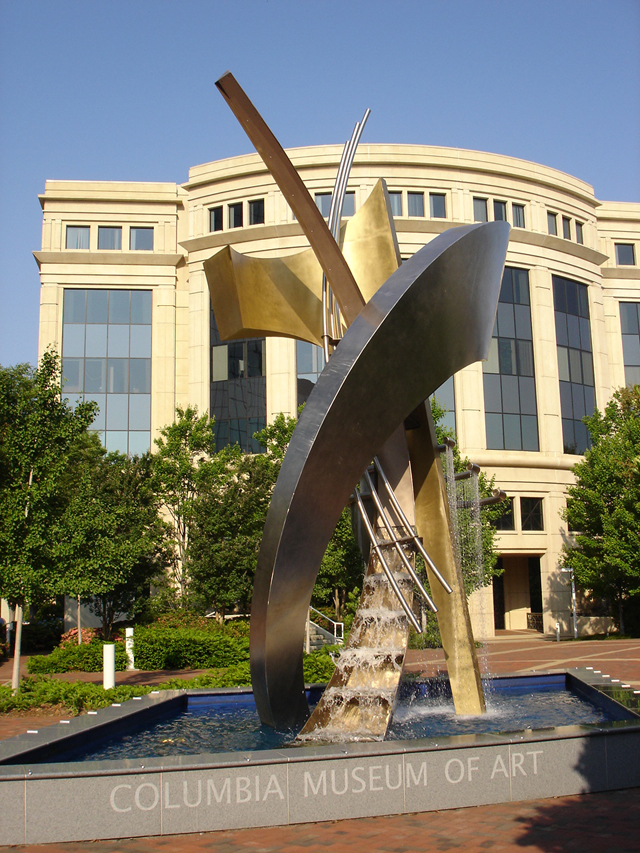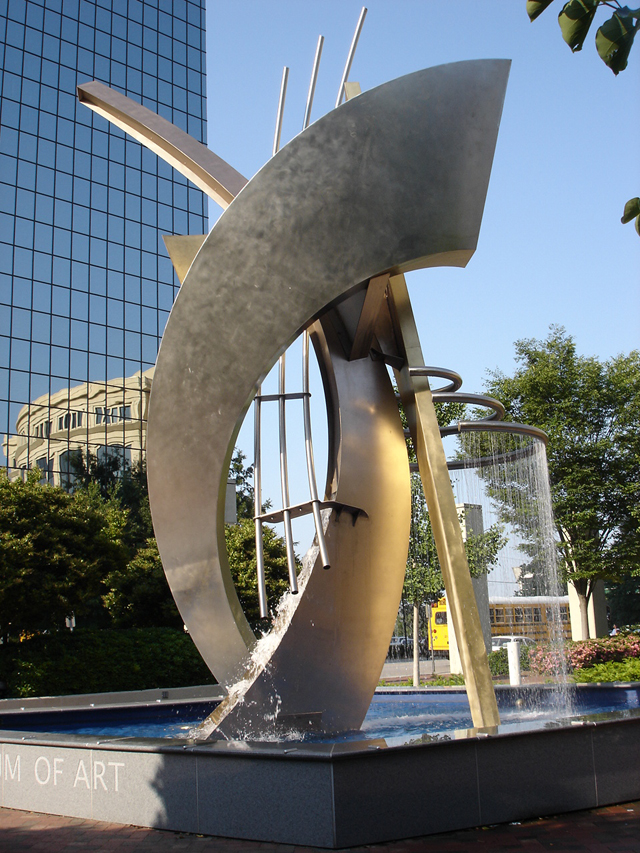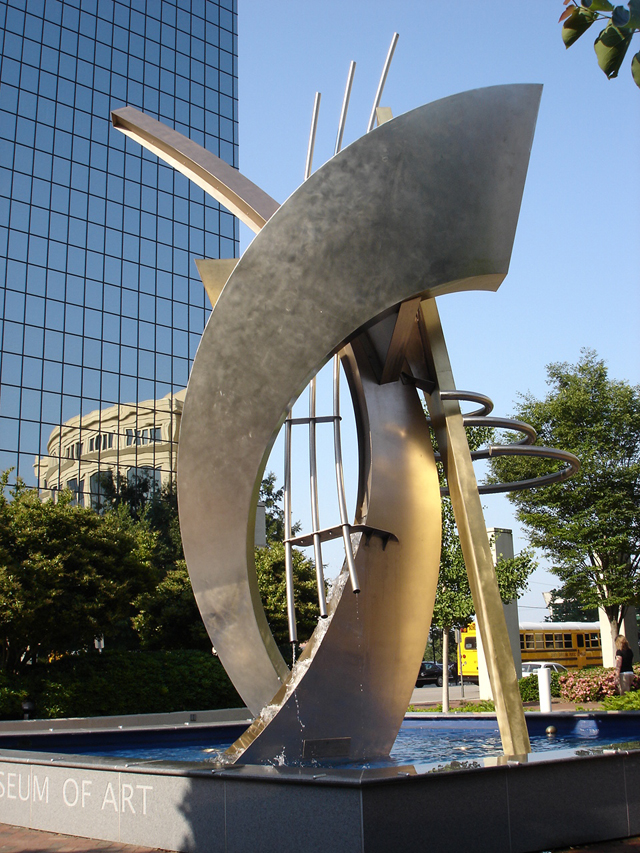A few months back I stopped to take some early morning photographs of the new fountain in front of the Columbia Museum of Art in Columbia, SC. Well, it’s not so new, but new enough.
I hope you enjoy some different views of this fountain, named Apollo’s Cascade. The fountain was created by Rodney Carroll in 2007.
While there checking out different views and angles, I stopped to read the plaque posted about the fountain and the people who gave money to make it possible. There were three groups of names (contributors) that made me start thinking. There were lots of other names – businesses, people I don’t know, and corporations.
One was – Mr. and Mrs. Guy Fleming Lipscomb. Here are truly some visual art patrons. The main art gallery space at the SC State Museum in Columbia is named the Lipscomb Gallery, as is the exhibit space at the South Carolina Governor’s School for the Arts and Humanities in Greenville, SC. There are also Lipscomb funded awards in juried exhibitions. You don’t get these kinds of honors without giving some money along the way.
Another name on the plaque was that of the Cultural Council of Richland & Lexington Counties. I was wondering if their contribution came from funds raised from the Palmetto Trees Project auction. Money raised from that effort was supposed to go to sculpture projects in Columbia. I hope this was one.
The third names were of Wendyth and Warner Wells. Wendy Wells is the owner of City Art, an art gallery located at 1224 Lincoln Street in Columbia. That is also the home of Art Express, an art supply store serving artists’ needs locally, regionally and nationally (there’s a plug). Wells is one of the owners of that business too.
My mind was flashing back to a photograph I had seen in one of the Mint Museum’s newsletters – from a year or so ago. It was a picture of Wells standing, looking at a painting by Amy Fichter, that she and her husband had donated to the Mint’s contemporary collection. Fichter earned her MFA in Drawing at the University of South Carolina in Columbia.
I have to say I was a little surprised to see that picture in the Mint newsletter – not to say I was surprised in that I didn’t believe it – more like unexpected seeing someone from SC giving to the Mint collection. I’ve seen a lot of these newsletters and this was new. I’ve also learned that Wells and her husband have donated works by Fichter to the Columbia Museum of Art and to the Birmingham Museum in Alabama. The Birmingham Museum is a surprise too, but I didn’t ask the why question. It didn’t matter.
How interesting.
What am I getting at? Well here was another example of a commercial gallery owner giving back to non-profits. It happens all the time. It probably happens everyday somewhere in the Carolinas. Whether it’s donating artwork for a fundraiser, framing some work for free to be displayed, or making a major contribution for a fountain or a work for a museum collection – people in the commercial side of the art world are always giving, but are often treated as just greedy capitalists – by the same people they are giving to – or at least some of them.
You know, Guy Lipscomb is an artist too. I checked and I didn’t see his name included in the SC Arts Commission’s State Art Collection. Not that giving money to the arts qualifies you to be included in a state collection, but neither is a work by Elizabeth O’Neill Verner and the Arts Commission co-opted her name to be used as an award for SC’s top art award. She was a commercial artist. She sold postcards of her works to early Charleston tourists for pennies. Her artwork isn’t good enough for the State Art Collection, but her name is for an award. In fact, I bet the Arts Commission now wishes they could afford a Verner – just to say they had one.
It’s the double standard. Commercial people – good enough to give, but not worthy enough to receive.
This double standard almost – almost spoiled my viewing of this wonderful fountain. This is what can happen when you know too much about the arts. Your head is filled with the good, but the bad is lurking inside too.
